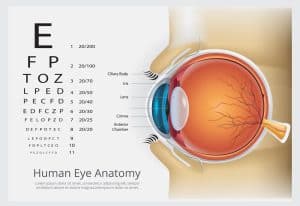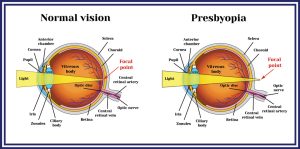
LASIK eye surgery is a revolutionary treatment for refractive errors, including nearsightedness, farsightedness, and astigmatism. However, some patients may have prescriptions or other concerns that fall outside the parameters for LASIK. These patients may be a better fit for LASIK alternatives, such as PRK, implantable contact lenses, and refractive lens exchange. LASIK alternatives can eliminate your dependence on eyeglasses and regular contact lenses, and the right vision correction procedure for you depends on your vision prescription, age, eye health, and other factors.
Our eye surgeons at Laser Eye Center™ will thoroughly examine your eye health, refractive errors, and general health and recommend the appropriate LASIK alternative to improve your eyesight. Our Los Angeles laser eye clinic has trained countless ophthalmologists in our 30-year history and performed over 500,000 successful procedures. We utilize the most advanced technologies and are at the forefront of ocular surgery research.
Photorefractive Keratectomy (PRK)
PRK is an alternative technique for laser vision correction that can provide visual freedom for people with nearsightedness, farsightedness, and astigmatism. The procedure removes the outer corneal surface layer (epithelium) instead of creating a flap like LASIK. The underlying corneal tissue is treated with an excimer laser for the best visual outcome. One of our experienced eye surgeons places a bandage contact lens over the cornea after the laser smooths the surface, which stays in place during healing.
This LASIK alternative is best for patients with pre-existing dry eye disease or thin corneas. PRK has a low risk of complications, and patients typically achieve excellent vision.
Phakic Intraocular Lenses

Implantable contact lenses offer a wider range of vision correction for people with nearsightedness (myopia). The lens is surgically placed in front of the eye’s natural lens to maintain the eye’s focusing ability. These implanted lenses provide precise refraction of incoming light onto the retina for crisp vision. Unlike LASIK and PRK, phakic intraocular lenses (IOL) are reversible because the implantation procedure does not alter the corneal shape or remove the natural eye lens.
Phakic implantable lenses are a LASIK alternative for patients with high refractive errors that can’t be safely corrected with refractive surgery. Phakic lenses can treat up to -20 diopters of myopia and help patients achieve 20/20 or better results. There’s little to no maintenance and no risk of dry eyes. Phakic implantable lenses are a long-term (and reversible) solution for people with high refractive errors.
Laser Eye Center™ offers EVO Visian ICL™, an FDA-approved phakic IOL using a trademarked Collamer material. Our eye surgeons recommend EVO Visian ICL™ for patients who don’t meet the key qualifications for traditional refractive surgery. The implantable Collamer® lens is placed behind the pigmented section of the eye (iris) through a small incision. Our laser eye clinic uses the latest technology to determine the precise dimensions for the lens implants to provide outstanding accuracy. The lens is virtually undetectable and offers instant vision improvement.
EVO Visian ICL™ has a 99% patient satisfaction rate with excellent night vision capabilities, UV protection, outstanding visual acuity, and a fast recovery.
Refractive Lens Exchange (RLE)

Refractive lens exchange uses artificial lens implants to replace the natural eye lens for better vision. These IOLs are also used during cataract surgery, the only difference being that refractive lens exchange removes a healthy eye lens. Also called clear lens extraction, RLE improves focusing ability at all distances with an advanced IOL, such as a multifocal or accommodative lens implant.
RLE is a LASIK alternative for people with severe farsightedness (hyperopia) who do not meet the key qualifications for LASIK. This lens replacement option also works for people with early cataracts who don’t want to wait until the eye disease clouds the natural lens and impacts vision. IOLs can treat severe nearsightedness that exceeds -11 diopters and age-related blurry near vision (presbyopia) and prevents cataract formation. Patients with refractive lens exchange will never need cataract surgery.
RLE offers a permanent solution for people over 50 with presbyopia or early cataracts who desire better vision.
LASEK and EPI-LASEK
These LASIK alternatives create different epithelial flaps than Modern LASIK. LASEK uses a trephine (a microsurgical tool) to create a thin flap and an alcohol solution to loosen epithelial cells. Once the flap is moved to the side, an excimer laser corrects the corneal shape (just like LASIK and PRK). Then the thin flap is repositioned and smoothed with a small spatula, and a soft contact lens bandage protects the eye while it heals. LASEK is an alternative refractive surgery for people with thin corneas and offers successful, long-lasting results with 20/40 or better vision.
EPI-LASEK creates a thin epithelial sheet on the cornea’s surface with a special handheld blade (microkeratome). Our eye surgeons move the thin sheet to the side, treat the cornea with an excimer laser, and place it back on the cornea with a bandage contact lens for healing.
SMILE – Small Incision Lenticule Extraction
SMILE is a LASIK alternative that uniquely adjusts the corneal shape. A femtosecond laser removes a piece of corneal tissue shaped like a disk called a lenticule and then reshapes the cornea. SMILE also requires a soft contact lens bandage and has a longer recovery than other methods. The procedure is best for patients with nearsightedness (up to -10 diopters) and up to .5 diopters of astigmatism.
Conductive Keratoplasty
Conductive keratoplasty (CK) uses thermal energy instead of a laser to improve mild to moderate hyperopia and presbyopia in people over 40. Our eye surgeons use a tiny probe that emits controlled radiofrequency energy to heat the side of the cornea. The heat energy causes the peripheral cornea to tighten and shrink, increasing the curvature of the central cornea for better light refraction. CK improves vision in patients with blurry near vision by correcting one eye for up-close focus and the other for distance vision (similar to Monovision LASIK). CK does not provide permanent vision correction; some patients may experience regression and become farsighted again.
Which LASIK Alternative Is Right for You?
Our talented eye surgeons at Laser Eye Center™ will recommend the vision correction procedure that will provide you with the best visual acuity without compromising the health and safety of your eyes. Modern LASIK at Laser Eye Center™ is most appropriate for people with healthy, thick corneas who meet the key qualifications for the procedure. PRK and LASEK or EPI-LASEK are alternative options for people with thin corneas. The SMILE procedure improves vision for patients with moderate to severe nearsightedness with no risk of flap complications. IOL implants for refractive lens exchange are often the best approach for older patients with presbyopia, and phakic implantable contact lenses are the ideal LASIK alternative for patients who want a reversible option.
Learn More About LASIK Alternatives
If you desire visual freedom from regular contact lenses and prescription eyeglasses, schedule a consultation at our laser eye clinic in Los Angeles, California. Contact Laser Eye Center™ at (800) 805-2737 to book your appointment at our state-of-the-art office.
Schedule your free consult today
Click here to learn moreGet started on your journey to clearer, crisper vision with Laser Eye Center™. Our expert team of doctors are trained and skilled in the latest technology and methods for laser vision correction. To learn more about our state-of-the-art All Laser LASIK technology or about All Laser LASIK itself, contact us today. Schedule your FREE All Laser LASIK consultation by calling today.

